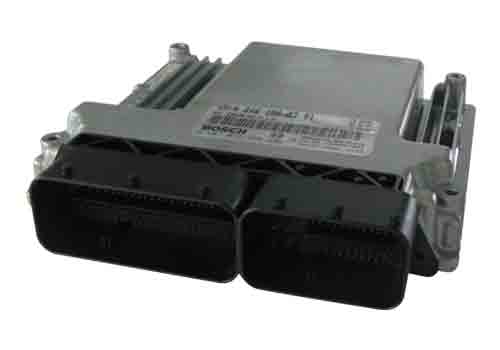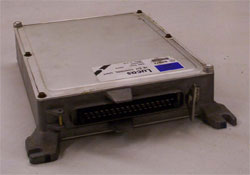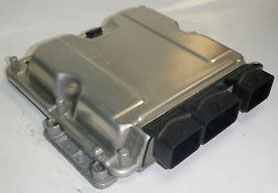The purchase of a car is one’s goal, and it takes years of saving and labour. A car will eventually deteriorate as the quality of the parts deteriorates and ongoing maintenance becomes the norm. The car AC equipment needs continual upkeep, from gas refill to guaranteeing effective blower functioning. To address all typical problems and guarantee that passengers are comfortable, it is helpful to have a handy automobile air conditioning repair guide.
Learn all you need to know about fixing the air conditioning in a car in this blog, from A to Z.
What Are The Common Problems You Face?
Dusty filters and unpleasant odours The most frequent problem with air conditioners is frequently the offensive smell and a lot of dust entering into the filters. The air filter can be changed to fix the problem, or it can be cleaned completely.

If the filter has bacteria growing on it and smells like mildew, it may be unsettling and needs cautious observation. Applying an anti-bacterial solution to the filter to make sure it is immaculate and smells good is one technique to tackle the problem.
Condensation that forms in the heating vent and collects on the car’s floor may also be a problem for the filter. It usually happens on the passenger floor side, and now is the time to get your car’s air conditioning fixed.
The Car AC compressor is operational
The engine compartment and whether the pulley’s centre is rotating along itself must be checked in order to determine whether the car AC is functioning properly. Frequently, loud pounding, grinding, and sounds like material lodged in the compressor may be heard.
Since it connects and disconnects the car AC compressor from the engine, the compressor clutch is crucial. Its responsibility is to control the refrigerant pressure and make sure it doesn’t go above a specific point. The engine is kept from being overloaded by the continual cycling of the car AC switch on and off.
If the AC isn’t working, a qualified auto mechanic needs to inspect the compressor clutch to see if it’s failing. To determine whether the clutch is engaged, look at the centre of the pulley. If the clutch is not engaged, the car’s air conditioning compressor is faulty and needs to be replaced.
There are no working air vents
It can be both perplexing and upsetting when there is no air coming from the vent. Some problems the owner can handle themselves, while others need a more experienced touch. When checking to see if the air vent is working or not, the following typical problems should be looked for:
- Electrical problems: Let’s revisit the lessons we all learnt in science classrooms on how electrical components work. A fuse’s responsibility is to make sure that when there is an increase in current, it will absorb it and safeguard the system. The ventilation fuse may be faulty if there is no power going to the blower motor.
- An unreliable relay could also be to blame for the current not being controlled.
- A broken motor The blower stops functioning and begins to malfunction as a result of the AC unit’s ongoing wear and tear. The resistor in the blower motor, which controls the fan’s speed, should be checked. Because the blower’s fuse is out, it can be malfunctioning.
Get it checked by the top auto air conditioning repair shops in your area if you experience any of the concerns listed. There are two built-in vents on the car AC unit, however one of them is obstructed. One is concentrated on the weather outside, and the other is concentrated inside, where the air is circulated. No air is being pumped via the blowers because one or both of them have been obstructed.
By switching the circulation mode, it is possible to assess the issue and determine whether the air vents are operational.
How should the electrical components be checked?
To ensure that the speed of the blower and the car AC unit is well-regulated, the electrical components are essential. A severe shortage of airflow may be caused by problems with blown circuits or connection problems.
Here are the steps one can take to determine whether there is an electrical issue:
- Look inside the compressor for the wire that connects to the electrical clutch.
- Remove the connector by grabbing it.
- The compressor wire must be connected to the positive terminal by a length of wire.
- A loud electrical noise indicates that everything is working well and that the connection is secure.
How to detect leaks
A/C uses very little or no refrigerant gas to cool. Therefore, an abrupt drop that occurs before the scheduled schedule can be concerning and is usually abnormal. Unless there is a leak in one of the two or more pipes that are making the seal, coolant levels usually stay steady.
Read more: How to Take Care of Your Car AC: Prep Your Car for Summers
It is well known that the O ring ensures adequate pressurisation and a rupture might cause leakage. The following techniques can be used to repair automotive air conditioning and determine whether or not there is a leak:
- Purchase a special torch and dye to assist you in finding market leaks first. Here is a straightforward checklist on how to accomplish this.-
- Spray the coolant with the dye from the dye can.
- It is then pressurised using the compressor.
- Use your black light torch in the dark to observe how the dye in the coolant causes it to shine.
- A sniffler, also known as a refrigerant detector, is another tool that can be used to locate the leak. Car AC mechanics frequently use snifflers to locate potential leaks. If no colour is noticeable, the coolant may just be getting low and more has to be added.
How to Add the Gas for Refrigeration
An owner can perform a car’s AC gas refill on their own with little to no assistance from a professional if they have some prior car-related experience and the ability to follow directions mechanically.
Important information
There are two different forms of refrigerant gas: R12, which was used before 1995, and R134, which was used after 1995. Your car needs a professional service to inject the petrol if it uses R134 because it cannot be serviced by the average person.
Let’s go over the steps to ensure that your automobile gets petrol for the air conditioning:
- Get a kit for refrigerant.
- Check the coolant gas’s temperature.
- Look for the nozzle that is located at the car AC unit’s lower side port.
- Thoroughly clean the service port side with a rag.
- Use the pipe that hangs off the refrigerant kit to attach it to the lower side of the port.
- Verify that the gauge is adequately pressured in accordance with the surrounding temperatures.
- Make sure the top is fully pressured by turning it clockwise.
- Shake the can a few times once it starts to pressurise to make sure the pressure doesn’t fluctuate.
- Once the pressure is steady, remove the charging house.
Replacing R12 with R134a
Many owners of older vehicles frequently experience condenser problems, inadequate cooling from the air conditioners, and coolant leaks. Consider upgrading the device if that is the case. One must comprehend the differences between the two cooling systems and the original reasons for the transfer before making the substantial change and costly expenditure.
Environmental concerns that were voiced all over the world were the main factor in the R12 standard being phased out. Hydrofluorocarbons (HFC) were employed for air cooling before it was discovered that they were harming the ozone layer. It was the main factor for the replacement of R12 with R134a as the new standard. Although there has been some debate regarding its effectiveness, it has been demonstrated to be more effective by almost all studies. Higher cooling temperatures and 15% less efficient heat exchange are some of R12’s drawbacks.
Read more: Deciphering the Differences: Car MOT and service
Due to the maintenance costs, it is preferable to update to a more contemporary car AC unit for the majority of older vehicles. A new kit can be installed for roughly $1000 to $3000.
Conclusion
It is a typical occurrence for the air conditioning systems in cars to malfunction at various points over their lifespan. By doing the above-mentioned DIY tests and repairs, these problems can be solved. Get automobile air conditioning repair by van for other issues that call for greater technical know-how, and make better use of the knowledge to abide by the advice of our specialist. Keep in mind that regular maintenance guarantees longevity and relaxing automobile rides with adequate cooling.



